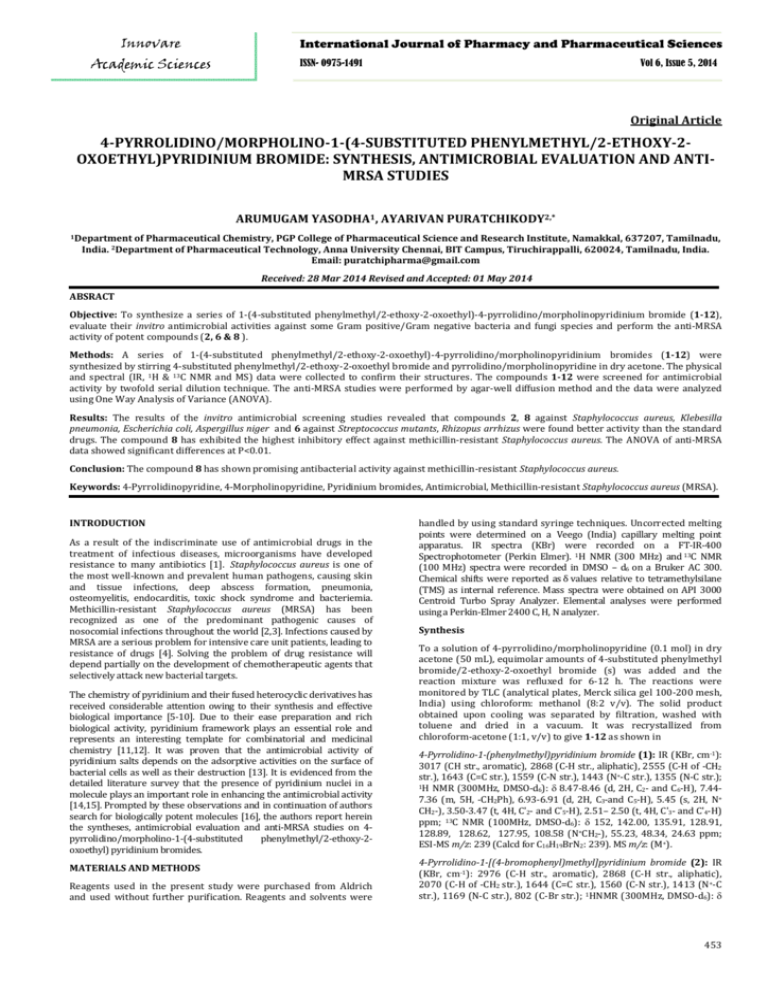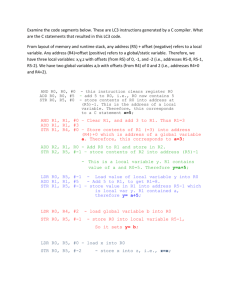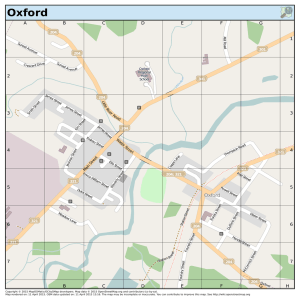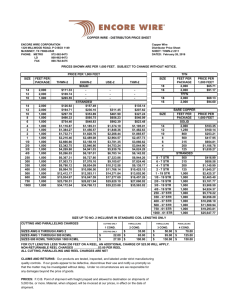(4-substituted phenylmethyl/2-ethoxy-2
advertisement

Innovare
Academic Sciences
International
Journal
Puratchikody
et al. of Pharmacy and Pharmaceutical Sciences
Int J Pharm Pharm Sci, Vol 6,Vol
Issue
5, 453-458
6, Issue
5, 2014
ISSN- 0975-1491
Original Article
4-PYRROLIDINO/MORPHOLINO-1-(4-SUBSTITUTED PHENYLMETHYL/2-ETHOXY-2OXOETHYL)PYRIDINIUM BROMIDE: SYNTHESIS, ANTIMICROBIAL EVALUATION AND ANTIMRSA STUDIES
ARUMUGAM YASODHA1, AYARIVAN PURATCHIKODY2,*
1Department
of Pharmaceutical Chemistry, PGP College of Pharmaceutical Science and Research Institute, Namakkal, 637207, Tamilnadu,
India. 2Department of Pharmaceutical Technology, Anna University Chennai, BIT Campus, Tiruchirappalli, 620024, Tamilnadu, India.
Email: puratchipharma@gmail.com
Received: 28 Mar 2014 Revised and Accepted: 01 May 2014
ABSRACT
Objective: To synthesize a series of 1-(4-substituted phenylmethyl/2-ethoxy-2-oxoethyl)-4-pyrrolidino/morpholinopyridinium bromide (1-12),
evaluate their invitro antimicrobial activities against some Gram positive/Gram negative bacteria and fungi species and perform the anti-MRSA
activity of potent compounds (2, 6 & 8 ).
Methods: A series of 1-(4-substituted phenylmethyl/2-ethoxy-2-oxoethyl)-4-pyrrolidino/morpholinopyridinium bromides (1-12) were
synthesized by stirring 4-substituted phenylmethyl/2-ethoxy-2-oxoethyl bromide and pyrrolidino/morpholinopyridine in dry acetone. The physical
and spectral (IR, 1H & 13C NMR and MS) data were collected to confirm their structures. The compounds 1-12 were screened for antimicrobial
activity by twofold serial dilution technique. The anti-MRSA studies were performed by agar-well diffusion method and the data were analyzed
using One Way Analysis of Variance (ANOVA).
Results: The results of the invitro antimicrobial screening studies revealed that compounds 2, 8 against Staphylococcus aureus, Klebesilla
pneumonia, Escherichia coli, Aspergillus niger and 6 against Streptococcus mutants, Rhizopus arrhizus were found better activity than the standard
drugs. The compound 8 has exhibited the highest inhibitory effect against methicillin-resistant Staphylococcus aureus. The ANOVA of anti-MRSA
data showed significant differences at P<0.01.
Conclusion: The compound 8 has shown promising antibacterial activity against methicillin-resistant Staphylococcus aureus.
Keywords: 4-Pyrrolidinopyridine, 4-Morpholinopyridine, Pyridinium bromides, Antimicrobial, Methicillin-resistant Staphylococcus aureus (MRSA).
INTRODUCTION
As a result of the indiscriminate use of antimicrobial drugs in the
treatment of infectious diseases, microorganisms have developed
resistance to many antibiotics [1]. Staphylococcus aureus is one of
the most well-known and prevalent human pathogens, causing skin
and tissue infections, deep abscess formation, pneumonia,
osteomyelitis, endocarditis, toxic shock syndrome and bacteriemia.
Methicillin-resistant Staphylococcus aureus (MRSA) has been
recognized as one of the predominant pathogenic causes of
nosocomial infections throughout the world [2,3]. Infections caused by
MRSA are a serious problem for intensive care unit patients, leading to
resistance of drugs [4]. Solving the problem of drug resistance will
depend partially on the development of chemotherapeutic agents that
selectively attack new bacterial targets.
The chemistry of pyridinium and their fused heterocyclic derivatives has
received considerable attention owing to their synthesis and effective
biological importance [5-10]. Due to their ease preparation and rich
biological activity, pyridinium framework plays an essential role and
represents an interesting template for combinatorial and medicinal
chemistry [11,12]. It was proven that the antimicrobial activity of
pyridinium salts depends on the adsorptive activities on the surface of
bacterial cells as well as their destruction [13]. It is evidenced from the
detailed literature survey that the presence of pyridinium nuclei in a
molecule plays an important role in enhancing the antimicrobial activity
[14,15]. Prompted by these observations and in continuation of authors
search for biologically potent molecules [16], the authors report herein
the syntheses, antimicrobial evaluation and anti-MRSA studies on 4pyrrolidino/morpholino-1-(4-substituted
phenylmethyl/2-ethoxy-2oxoethyl) pyridinium bromides.
MATERIALS AND METHODS
Reagents used in the present study were purchased from Aldrich
and used without further purification. Reagents and solvents were
handled by using standard syringe techniques. Uncorrected melting
points were determined on a Veego (India) capillary melting point
apparatus. IR spectra (KBr) were recorded on a FT-IR-400
Spectrophotometer (Perkin Elmer). 1H NMR (300 MHz) and 13C NMR
(100 MHz) spectra were recorded in DMSO – d6 on a Bruker AC 300.
Chemical shifts were reported as δ values relative to tetramethylsilane
(TMS) as internal reference. Mass spectra were obtained on API 3000
Centroid Turbo Spray Analyzer. Elemental analyses were performed
using a Perkin-Elmer 2400 C, H, N analyzer.
Synthesis
To a solution of 4-pyrrolidino/morpholinopyridine (0.1 mol) in dry
acetone (50 mL), equimolar amounts of 4-substituted phenylmethyl
bromide/2-ethoxy-2-oxoethyl bromide (s) was added and the
reaction mixture was refluxed for 6-12 h. The reactions were
monitored by TLC (analytical plates, Merck silica gel 100-200 mesh,
India) using chloroform: methanol (8:2 v/v). The solid product
obtained upon cooling was separated by filtration, washed with
toluene and dried in a vacuum. It was recrystallized from
chloroform-acetone (1:1, v/v) to give 1-12 as shown in
4-Pyrrolidino-1-(phenylmethyl)pyridinium bromide (1): IR (KBr, cm-1):
3017 (CH str., aromatic), 2868 (C-H str., aliphatic), 2555 (C-H of -CH2
str.), 1643 (C=C str.), 1559 (C-N str.), 1443 (N+-C str.), 1355 (N-C str.);
1H NMR (300MHz, DMSO-d ): δ 8.47-8.46 (d, 2H, C - and C -H), 7.446
2
6
7.36 (m, 5H, -CH2Ph), 6.93-6.91 (d, 2H, C3-and C5-H), 5.45 (s, 2H, N+
CH2-), 3.50-3.47 (t, 4H, C'2- and C'5-H), 2.51– 2.50 (t, 4H, C'3- and C'4-H)
ppm; 13C NMR (100MHz, DMSO-d6): δ 152, 142.00, 135.91, 128.91,
128.89, 128.62, 127.95, 108.58 (N+CH2-), 55.23, 48.34, 24.63 ppm;
ESI-MS m/z: 239 (Calcd for C16H19BrN2: 239). MS m/z: (M+).
4-Pyrrolidino-1-[(4-bromophenyl)methyl]pyridinium bromide (2): IR
(KBr, cm-1): 2976 (C-H str., aromatic), 2868 (C-H str., aliphatic),
2070 (C-H of -CH2 str.), 1644 (C=C str.), 1560 (C-N str.), 1413 (N+-C
str.), 1169 (N-C str.), 802 (C-Br str.); 1HNMR (300MHz, DMSO-d6): δ
453
Puratchikody et al.
Int J Pharm Pharm Sci, Vol 6, Issue 5, 453-458
8.43-8.42 (d, 2H, C2- and C6-H), 7.63-7.61 (d, 2H, -C'3- and C'5-H), 5.42
(s, 2H, N+ CH2-), 6.93-6.91 (d, 2H, C3-and C5-H), 7.39-7.37 (d, 2H, C'2and C'6-H), 3.49-3.47 (t, 4H, C'2- and C'5-H), 1.99–1.98 (t, 4H, C'3- and
C'4-H) ppm; 13C NMR (100MHz, DMSO-d6): δ 153.03, 141.96, 135.23,
131.91, 130.22 (-C4-Br), 122.00, 108.63 (N+CH2-), 58.49, 48.36, 24.63
ppm; ESI-MS m/z: 317 (Calcd for C16H18Br2N2: 316). MS m/z: (M+1).
Scheme 1: Synthesis of compounds 1-12
Compd. No
Z
1
2
3
4
5
6
R
Compd. No
Z
-C6H5
7
-C6H4-Br(4)
8
-C6H4-NO2(4)
9
-C6H4-CH3(4)
10
-COC6H5
11
-OCOCH2CH3
12
R
-C6H5
-C6H4-Br(4)
-C6H4-NO2(4)
-C6H4-CH3(4)
-COC6H5
-OCOCH2CH3
4-Pyrrolidino-1-[(4-nitrophenyl)methyl]pyridinium bromide (3): IR
(KBr, cm-1): 3046 (C-H str., aromatic), 2873 (C-H str., aliphatic),
2360 (C-H of -CH2 str.), 1646 (C=C str.), 1523 (C-N str.), 1344 (N+C str.), 1176 (N-C str.), 840 (C-NO2 str.); 1H NMR (300MHz, DMSOd6 ): δ 8.49-8.48 (d, 2H, C2- and C6-H), 8.27-8.26 (d, 2H, C''5- and
C''3-H), 7.67-7.65 (d, 2H, C''2- and C''6-H), 6.97-6.96 (d, 2H, C3-and
C5-H), 5.64 (s, 2H, N+ CH2-), 3.52-3.49 (t, 4H, C'2- and C'5-H), 2.20 –
1.98 (t, 4H, C'3- and C'4-H) ppm; 13C NMR (100MHz, DMSO-d6): δ
147.46, 143.17, 142.17, 129.12, 124.04, 108.76 (N+CH2-), 48.44 (C4-NO2), 24.63 ppm; ESI-MS m/z: 284 (Calcd for C16H18BrN3O2:
284). MS m/z: (M+).
4-Pyrrolidino-1-[(4-methylphenyl)methyl]pyridinium bromide (4): IR
(KBr, cm-1): 3017 (C-H str., aromatic), 2014 (C-H str., aliphatic),
2361 (C-H of -CH2 str.), 1643 (C=C str.), 1559 (C-N str.), 1352 (N+-C
str.), 1172 (N-C str.); 1H NMR (300MHz, DMSO-d6): δ 8.44-8.43 (d,
2H, C2- and C6-H), 7.33-7.31 (d, 2H, -C''2- and C''6-H), 7.22-7.20 (d,
2H, -C''3- and C''5-H), 6.91-6.90 (d, 2H, C3- and C5-H), 3.49-3.46 (t, 4H,
C'2- and C'5-H), 2.28 (s, 3H-C''4-CH3), 2.0 –1.97 (t, 4H, C'3- and C'4-H)
ppm; 13C NMR (100MHz, DMSO-d6): δ 152.99, 141.91, 138.09,
132.89, 129.51, 128.22, 128.01, 108.53 (N+CH2-), 59.08, 48.32,
24.63, 20.68 (-C4-CH3) ppm; ESI-MS m/z: 253 (Calcd for C17H21BrN2:
253). MS m/z: (M+).
4-Pyrrolidino-1-(2-oxo-2-phenylethyl)pyridiniumbromide (5): IR
(KBr, cm-1): 3017 (C-H str., aromatic), 2858 (C-H str., aliphatic),
2394 (C-H of -CH2 str.), 1717 (C=O str.), 1559 (C=C str.), 1443 (C-N
str.), 1355 (N+-C str.), 1171 (N-C str.); 1H NMR (300MHz, DMSO-d6):
δ 8.47-8.46 (d, 2H, C2- and C6-H), 7.44-7.36 (m, 5H, -COPh), 6.93-6.91
(d, 2H, C3-and C5-H), 5.45 (s, 2H, N+ CH2-), 3.50-3.47 (t, 4H, C'2- and
C'5-H), 2.0-1.98 (t, 4H, C'3- and C'4-H) ppm; 13C NMR (100MHz,
DMSO-d6): δ192.15 (C=O), 153.01, 152.01, 142.00, 135.91, 128.99,
128.62, 127.95, 108.58 (N+CH2-), 59.23 ppm; ESI-MS m/z: 267 (Calcd
for C17H19BrN2O: 267). MS m/z: (M+).
4-Pyrrolidino-1-(2-ethoxy-2oxoethyl)pyridinium bromide (6): IR (KBr,
cm-1): 3017 (C-H str., aromatic), 2858 (C-H str., aliphatic), 2394 (C-H
of -CH2 str.), 1744 and 1654 (C=O str.), 1552 (C=C str.), 1382 (N+-C
str.), 1210 (C-N str.), 1019 (N-C str.); 1H NMR (300MHz, DMSO-d6): δ
8.27-8.26 (d, 2H, C2- and C6-H), 6.94-6.92 (d, 2H, C3-and C5-H), 5.19
(s, 2H, N+ CH2-), 3.52-3.48 (quadret, 2H,-CH2- CH3), 3.90 (t, 4H, C'2and C'5-H), 2.51-2.50 (t, 3H,-CH2-CH3), 2.0 (t, 4H, C'3- and C'4-H); 13C
NMR (100MHz, DMSO-d6): δ 169.43 (carbon of –COO gp), 154.63,
153.85, 143.53, 139.37, 139.00, 108.37, 108.07 (N+CH2-), 57.25 (CH2-CH3), 48.89, 48.66 (-CH2-CH3) ppm; ESI-MS m/z: 235 (Calcd for
C13H19BrN2O2: 235). MS m/z: (M+).
4-Morpholino-1-(phenylmethyl)pyridinium bromide (7): IR (KBr, cm3026 (C-H str., aromatic), 2853 (C-H str., aliphatic), 2372 (C-H of CH2 str.), 1643 (C=C str.), 1550 (C-N str.), 1440 (N+-C str.), 1262 (CO-C str.), 1170 (N-C str.); 1H NMR (300MHz, DMSO-d6): δ 8.51-8.49
(d, 2H, C2- and C6-H), 7.44-7.37 (m, 5H, -CH2Ph), 7.29-7.27, (d, 2H, C3and C5-H), 5.44 (s, 2H, N+CH2-), 3.73 – 3.71 (t, 4H, C'2- and C'5-H),
3.68-3.66 (t, 4H, C'2- and C'6-H) ppm; 13C NMR (100MHz, DMSO-d6): δ
155.72, 142.65, 135.64, 129.03, 128.71, 128.04, 108.37 (N+CH2-),
65.42 (C-O), 59.41 (C-N) ppm; ESI-MS m/z: 255 (Calcd for
C16H19BrN2O: 255). MS m/z: (M+).
1):
4-Morpholino-1-[(4-bromophenyl)methyl]pyridinium bromide (8): IR
(KBr, cm-1): 2992 (CH str., aromatic), 2854 (CH str., aliphatic), 1973
(CH2 str.), 1642 (C=C str.), 1546 (C-N str.), 1416 (N+-C str.), 1263 (CO-C str.), 1177 (N-C str.), 787 (C-Br str.); 1H NMR (300MHz, DMSOd6): δ 8.50-8.49 (d, 2H, C2- and C6-H), 7.64-7.63 (d, 2H, C''3- and C''5H), 7.42-7.41 (d, 2H, C''2- and C''6-H), 7.29-7.28 (d, 2H, C3-and C5-H),
5.43 (s, 2H, N+CH2-), 3.73 – 3.72 (t, 4H, C'3- and C'5-H), 3.69 –3.67 (t,
4H, C'2- and C'6-H) ppm; 13C NMR (100MHz, DMSO-d6): δ 156.22,
143.13, 135.50, 132.44, 130.85 (C4-Br), 122.60, 108.90 (N+CH2-),
65.93 (C-O), 59.07, 46.63 (C-N) ppm; ESI-MS m/z: 383 (Calcd for
C16H19Br2N2O: 383). MS m/z: (M+).
4-Morpholino-1-[(4-nitrophenyl)methyl]pyridinium bromide (9): IR
(KBr, cm-1): 2858 (C-H str., aromatic), 2453 (C-H str., aliphatic),
2153 (C-H of -CH2 str.), 1643 (C=C str.), 1535 (C-N str.), 1346 (N+-C
str.), 1263 (C-O-C str.), 1180 (N-C str.), 839 (C-NO2 str.); 1H NMR
(300MHz, DMSO-d6): δ 8.52-8.50 (d, 2H, C2- and C6-H), 8.30-8.29 (d,
2H, -C'3- and C'5-H), 7.68-7.67 (d, 2H, -C''2- and C''6-H), 7.23-7.22 (d,
2H, C3-and C5-H), 5.60 (s, 2H, N+ CH2-), 3.73 –3.72 (t, 4H, C'3- and C'5H), 3.69-3.67 (t, 4H, C'2- and C'6-H) ppm; 13C NMR (100MHz, DMSOd6): δ 156.25, 148.05, 143.35, 140.30, 131.34, 131.04, 129.71,
129.29, 127.51, 124.57, 124.45, 124.32, 124.14, 108.98, 107.90
(N+CH2-), 65.93 (C-O), 58.88, 46.67 (C-N), 46.40 (-C4-NO2), 32.59
ppm; ESI-MS m/z: 300 (Calcd for C16H19BrN3O3: 300). MS m/z: (M+).
4-Morpholino-1-[(4-methylphenyl)methyl]pyridinium bromide (10):
IR (KBr, cm-1): 3013 (C-H str., aromatic), 2855 (C-H str., aliphatic),
1972 (C-H of -CH2 str.), 1643 (C=C str.), 1544 (C-N str.), 1424 (N+-C
str.), 1262 (C-O-C str.), 1113 (N-C str.); 1H NMR (300MHz, DMSOd6): δ 8.48-8.47 (d, 2H, C2- and C6-H), 8.26-8.24 (d, 2H, C''2- and C''6H), 7.34-7.33 (d, 2H, -C''3- and C''5-H), 7.08-7.07 (d, 2H, C3-and C5-H),
5.38 (s, 2H, N+ CH2-), 3.72-3.70 (t, 4H, C'3- and C'5-H), 3.54 -3.52 (t,
4H, C'2- and C'6-H), 2.29 (s, 3H-C''4-CH3) ppm; 13C NMR (100MHz,
DMSO-d6): δ 156.20, 143.05, 138.71, 133.14, 130.04, 128.62, 108.83
(N+CH2-), 66.05 (C-O), 65.92, 59.73, 46.59, 46.30 (C-N), 21.18 (C'4-
454
Puratchikody et al.
Int J Pharm Pharm Sci, Vol 6, Issue 5, 453-458
CH3) ppm; ESI-MS m/z: 270 (Calcd for C17H21BrN2O: 270). MS m/z:
(M+).
4-Morpholino-1-(2-oxo-2-phenylethyl)pyridinium bromide (11): IR
(KBr, cm-1): 3026 (C-H str., aromatic), 2853 (C-H str., aliphatic),
1962 (C-H of -CH2 str.), 1743 (C=O str.), 1550 (C=Cstr.), 1440 (C-N
str.), 1308 (N+-C str.), 1262 (C-O-C str.), 1170 (N-C str.); 1H NMR
(300MHz, DMSO-d6): δ 8.20-8.18 (d, 2H, C2- and C6-H), 7.43-7.35 (m,
5H, -COPh), 6.83-6.82 (d, 2H, C3-and C5-H), 5.42 (s, 2H, N+ CH2-),
3.73-3.71 (t, 4H, C'3- and C'5-H), 3.27–3.25 (t, 4H, C'2- and C'6-H)
ppm; 13C NMR (100MHz, DMSO-d6): δ 194.41 (C=O), 155.31, 150.27,
128.62, 108.70 (N+CH2-), 66.19 (C-O), 46.09 (C-N) ppm; ESI-MS m/z:
283 (Calcd for C17H19BrN2O2: 283). MS m/z: (M+).
4-Morpholino-1-(2-ethoxy-2-oxoethyl)pyridinium bromide (12): IR
(KBr, cm-1): 2954 (C-H str., aromatic), 2834 (C-H str., aliphatic),
2103 (C-H of -CH2 str.), 1747 and 1655 (C=O str.), 1551 (C=C str.),
1376 (C-N str.), 1242 (C-O-C str.), 1210 (N+-C str.), 1114 (N-C str.);
1H NMR (300MHz, DMSO-d6): δ 8.31-8.29 (d, 2H, C2- and C6-H), 7.337.28 (d, 2H, C3-and C5-H), 5.22 (s, 2H, N+CH2-), 4.23-4.19 (quadret,
2H,-CH2- CH3), 3.75-3.74 (t, 4H, C'3- and C'5-H), 3.73-3.71 (t, 4H, C'2and C'6-H), 3.65-3.63 (t, 3H,-CH2-CH3) ppm; 13C NMR (100MHz,
DMSO-d6): δ 167.97 (carbon of –COO gp), 156.29, 144.24, 144.21,
141.28, 108.16, 108.04, 107.99 (N+CH2-), 65.99 (-CH2-CH3), 65.95 (CO), 62.30, 57.09 (-CH2-CH3), 46.68 (C-N), 46.60, 46.37, 14.47 ppm;
ESI-MS m/z: 251 (Calcd for C13H19BrN2O3: 251). MS m/z: (M+).
Antimicrobial activity
The minimum inhibitory concentration (MIC) assays of the
newly synthesized compounds (1-12) were conducted against a
Gram positive bacteria Staphylococcus aureus, Streptococcus
mutants, Gram negative bacteria Escherichia coli, Klebesilla
pneumonia and fungi Rhizopus arrhizus, Aspergillus niger by the
twofold serial dilution technique [17,18]. Initially bacteria/fungi
were grown at 37°C/25°C in Nutrient Broth/Sabouraud dextrose
broth I.P. This culture was used to inoculate 100 ml of media so
that an initial number of 2 x 10 6 CFU/mL could be achieved. Test
compound was dissolved in DMSO and was added to 20 mL
inoculated media to get a final concentration of 100 µg/mL. Twofold dilution of this compound was achieved by transferring 10
mL of this 100 µg/mL test compound containing media to
another 10 mL inoculated media to get a final concentration 50
µg/mL of the test compound. All other dilutions of the test
compounds were prepared in a similar fashion to get the
minimal dilution to 0.39 µg/mL. Each 10 mL inoculated media
along with the test compound was dispensed equally into 3
screws capped 10 mL glass culture tubes. Controls without the
test compound, only media and in the presence of
Ciprofloxacin/Fluconazole were set up simultaneously. The
samples were incubated at 37°C for 24 h (bacteria), at 25°C for
72 h (Aspergillus niger) and at 37°C for 48 h (Rhizopus arrhizus)
respectively. After incubation, the growth of bacteria / fungi was
determined by measuring optical density at 600 nm using
SYSTRONICS UV-VISIBLE Spectrophotomer 117. The lowest
concentration at which there was more than 90% inhibition of
bacteria/fungi as compared to the culture without test
compound was taken up as minimal inhibitory concentration
(MIC).
Anti-MRSA activity
Sample collection and isolation
In the present study, a total of 205 clinical samples obtained from
Government Hospitals in Perambalur and Namakkal, Tamilnadu,
India. All the isolates were identified according to colonial and
microscopic morphology and standard tests like catalase, tube
coagulase, motility, oxidase and biochemical tests [19].
DNA isolation for PCR
For nucleic acid isolation from staphylococcal isolates, the frozen
samples were thawed rapidly, and were cultivated in brain-heart
infusion broth (Merck, Germany) at 37°C with continuous shaking
for overnight. Total DNA was isolated from 5 ml of a broth culture
grown for overnight [20].
PCR detection of genes
The mecA/TSST genes were amplified with the respective primers
by the method followed by Schmitz et al [21]. The PCR was
performed with an initial denaturation step of 5 min 94°C,
followed by 25 cycles of 20 s 94°C, annealing at 55°C for 20 s and
the extension step of 50s 72°C. Agarose gels were prepared with
TBE buffer (Tris, Boric acid, EDTA, pH 8) and stained with
ethidium bromide (1 μg/15 ml gel). PCR product (5 μl) of each
sample was mixed with 5 μl of sample buffer (6X: 0.25%
bromophenol, 0.25% xylene cyanol, 15% ficol 400) and loaded on
1.5% agarose and electrophoresed in 75 volts for 60 min. The
band of the fragment was observed by ultraviolet (UV)
transilluminator and was documented by gel analyzer machine
[22].
Antibacterial activity against MRSA
The compounds 2, 6 and 8 were proven as highly potent
antimicrobial agents and selected for anti-MRSA activity. The active
compounds 2, 6 and 8 were tested against selected isolates of
MRSA by the agar-well diffusion method [23]. All the tests were
performed in triplicate and the anti-MRSA activity produced by the
test compounds was expressed as the mean diameter of the
inhibition zones (mm).
Statistical analysis
All the experiments were conducted in triplicate and statistical
analysis of the data was performed by analysis of variance (ANOVA),
using the statistical package for social sciences (SPSS) program,
version 17.0. A probability value of difference p≤0.01 was
considered to be statistically significant. All the data were presented
as mean values ± standard deviation (SD).
RESULTS AND DISCUSSION
The synthesis of compounds 1-12 were achieved through the versatile
and efficient synthetic route as depicted in Scheme 1. In the present
investigation, group at 4-position of pyridinium moiety makes, the
more electron density of the ring nitrogen [24]. The dry acetone is
more appropriate solvent for quaternisation reactions [25].
The physical data of 1-12 were collected and are presented in the
Table 1. The yield of the compound 5 is found to be 50%, whereas,
other compounds are more than 70%. This may be due to the
solubility of compound 5 may be more in dry acetone than the
others.
Spectral analysis
The IR spectra of the compounds 1-12 have been analyzed. The
presence of N+CH2- has been recognized by the absorption bands in
the region at 1443-1344 cm-1. This may be due to the nitrogen cation
which makes the bond stronger by electron attraction. The presence
of >C=O group in 5 and 12 is revealed by the absorption in the
region 1717 and 1747 cm-1 respectively. Absorption in the region
840 and 839 cm-1 for the compounds 3 and 9 indicates the
characteristic bands for C-NO2. The proton NMR spectra of the
compounds 1-12 were recorded and the chemical shift values for
methylene (-CH2-) proton of 1-12 goes to the down field in the range
at δ 5.64-5.19 ppm. This may attributed to the attachment of
nitrogen cation with a methylene group (N+CH2-). In the all
compounds for C2-H and C6-H protons showed doublet in the down
field compared to C3-H and C5-H protons of pyridine. This revealed
the presence of positive charge on the ring nitrogen. The chemical
shift values of other protons and corresponding assignments are
presented in the experimental section.
Antimicrobial activity
The minimum inhibitory concentration (MIC) assays for the
synthesized compounds (Figure 1) revealed that some of the
compounds showed a good deal of activity against all the mentioned
bacteria and fungi. Pyrrolidino derivative (2) with the substitution
of a bromine atom at the 4-position of the phenyl ring of pyridinium
base displayed strong inhibitory action against both gram positive
(Staphylococcus aureus) and gram negative (Klebesilla pneumonia)
bacteria in 3.12 µg/ml of MIC. The carboethoxymethyl derivative (6)
455
Puratchikody et al.
Int J Pharm Pharm Sci, Vol 6, Issue 5, 453-458
with pyrrolidinopyridnium moiety exhibited good activity against
Streptococcus mutants. Compound 8 has a morpholinopyridnium
moiety with a phenyl ring bearing halogen substitute in the form of
bromine atom at the para position displayed promising activity
against Escherichia coli at the low MIC value of 0.78 µg/ml.
Morpholinopyridnium derivatives with phenacyl group appeared
with good inhibitory potential toward Rhizopus arrhizus at the MIC
value of 0.78 µg/mL. Morpholinopyridnium derivatives with a
phenyl ring bearing bromine substituent (8) at 4-position showed
strong inhibition of Aspergillus niger at the MIC value of 3.12 µg/mL.
The above results suggested that the compounds 2, 6 and 8 exerted
excellent antimicrobial activities compared to the standard drugs
ciprofloxacin (antibacterial) / fluconazole (antifungal) respectively.
Taking these findings into consideration, we designated the
compounds 2, 6 and 8 as potent compounds and selected for antiMRSA activity.
Table 1: Physical data of 1-(4-substituted phenylmethyl/2-ethoxy-2-oxoethyl)-4-pyrrolidino/morpholinopyridinium bromide (1-12)
Compd. No
MF
Colour
Yield
(%)
MP
(°C)
1.
2.
3.
4.
5.
6.
7.
8.
9.
10.
11.
12.
C16H19BrN2
C16H18Br2N2
C16H18BrN3O2
C17H21BrN2
C17H19BrN2O
C13H19BrN2O2
C16H19BrN2O
C16H19Br2N2O
C16H19BrN3O3
C17H21BrN2O
C17H19BrN2O2
C13H19BrN2O3
Colourless
Colourless
Yellow
Pale Yellow
Colourless
Colourless
Colourless
Colourless
Yellow
Pale Yellow
Colourless
Colourless
78
80
84
76
50
65
70
72
69
74
72
68
114-116
100-102
150-152
178-180
124-126
165-167
288-290
295-297
240-242
282-284
235-237
208-210
Analytical data of
C, H, N
Found (Calculated)
80.32(80.83), 7.92 (7.94), 11.70 (11.71)
60.73 (60.75), 5.68 (5.69), 8.88 (8.89)
67.58 (67.60), 6.37 (6.38), 14.77 (14.78)
80.62 (80.63), 8.28(8.30), 11.05 (11.06)
76.42(76.20), 7.10 (7.11), 10.46 (10.48)
66.36 (66.38), 8.07 (8.08), 11.90 (11.91)
75.27 (75.29), 7.44 (7.45), 10.96, 10.98
50.25 (50.26), 4.70 (4.71), 7.30 (7.30)
63.98 (64.00), 6.01 (6.00), 13.99 (14.00)
76.10 (76.11), 7.81 (7.83), 10.42 (10.44)
72.06 (72.08), 6.70 (6.71), 9.87 (9.89)
62.14(62.15), 7.54 (7.56) 11.13 (11.15)
Anti-MRSA activity
The World Health Organization (WHO) has identified antimicrobial
resistance as one of the 3 most important problems for human
health (WHO 2002) [26]. Over the past decade, there has been an
increasing in the rate of infection and disease caused by
Staphylococcus aureus particularly MRSA throughout the world from
22% in 1995 to 57% in 2001 [27,28]. Therefore, understanding the
epidemiology of this organism as well as the potential pathogenicity
of the infecting strains is important to design control strategies for
the concerned patients. In our study MRSA isolates were in majority
of wound discharges (53.4%), followed by burn discharges (46%),
blood samples (42.8%), urine (40%) and sputum (30%). The major
sites of isolation for nosocomial MRSA infection was from wound
discharges which is similar to the study conducted by Montensinos
[29]. In our present study, among the 100 tested isolates 46% were
resistant to methicillin. Results about resistance to methicillin found
in this study were higher than 38% resistance which was reported
CLSI 2007, but were in accordance with those in similar studies from
New Delhi (51.6%) and Assam (52.9%) in India [30,31].
SA: Staphylococcus aureus, SM: Streptococcus mutans, KP: Klebsiella
pneumonia, EC: Echerichia coli, Rh: Rhizopus arrhizus, AN:
Aspergillusniger
Fig. 1: Graph showing relation between the synthesized
compounds and their MIC against bacteria (a) and fungi (b).
The results of PCR showed that the protection of enterotoxin genes,
which play a major role in the pathogenecity of Staphylococcus
aureus. A recent study indicated that high mobility of mecA gene
may be more prevalent than the movement of the enterotoxin genes
[19]. One of the most unique manifestations among the various
staphylococcal infections is staphylococcal toxic shock syndrome
(TSS) associated toxin TSS toxin-1 (TSST-1) and might also be
involved in the genesis of some autoimmune diseases [32]. The
present study found that over 14% of clinical MRSA isolates carried
the TSST gene. This ratio is compatible with recent reports of other
countries and increasing annually [33]. These results were
confirmed by PCR using the specific primers of resistance genes. All
primers produced amplicons of predicted sizes were reported in
Table 2 and the PCR products of mecA and TSST genes were shown
in Figure 2.
456
Puratchikody et al.
Int J Pharm Pharm Sci, Vol 6, Issue 5, 453-458
Table 2: The primer sequences and predicted sizes used in the PCR
Gene
mecA
TSST
Oligonucleotide sequences (5' - 3')
5' - CACTTGGTATATCTTCACC - 3'
5 - CTCAGGTACTGCTATCCACC - 3'
5'-AGCAGGGCTATAATAAGGACTC-'3
5AAGCCCTTTGTTGCTTGCGAC-3'
Size of amplified product (bp)
449 bp
250 bp
Fig. 2: PCR Product of mecA and TSST genes
Fig. 3: Anti-MRSA activity of 1-(4-substituted)benzyl/carboethoxymethyl-4-pyrrolidino/morpholinopyridinium bromide
This study indicates that, mecA gene present in 46 isolates and TSST
gene in 15 isolates. Both mecA and TSST genes are present in eleven
isolates. The distribution of eleven isolates according to the units
was as follows: 5 (45%) were from wound discharge, each of one
(6.6%) from burn discharge, sputum, blood and 3 (27.2%) were
from urine isolates.
Pyrrolidinopyridinium derivatives with 4-bromo substituted phenyl
ring (2) and 2-ethoxy-2-oxyethyl group (6) and morpholino
pyridinium derivative with 4-bromo substituted phenyl ring (8)
were screened against eleven MRSA isolates by agar-well diffusion
assay at the concentration of 100 µg/ml. The mean difference of
zone of inhibition of compounds 2, 6 and 8 at 95% Confidence
interval is shown in Figure 3. Based on the obtained values of the
zone inhibition, it was revealed that the compound 8 that is a
morpholino derivative containing bromine substituted phenyl ring
as well as pyridinium nuclei was found to be very effective against
MRSA isolates. The factors controlling antimicrobial activity of the
substituted pyridinium salts are the hydrophobicity, adsorbability,
surface activity, position of the substituents and electron density of
the ammonium nitrogen atom [6].
Pyridinium salts have previously been reported to have anti-MRSA
activity [34]. Another important pharmacophore group is the
morpholino nucleus incorporated in a pyridinium salt, which is
important for its antimicrobial properties [35].
CONCLUSION
A series of 4-pyrrolidino/ morpholino-1- (4-substituted
phenylmethyl/2-ethoxy-2-oxoethyl) pyridinium bromides were
synthesized in good yield and evaluated for in vitro antimicrobial
activity. Methicillin-resistance (46%) of our study indicated the
prevalence of MRSA and the pattern of antibiotic susceptibility to
first line antibiotics are changing. The pyridinium bromide bearing a
4-bromo substituted phenyl ring and morpholino nucleus (8) has
shown promising antibacterial activity against methicillin-resistant
457
Puratchikody et al.
Int J Pharm Pharm Sci, Vol 6, Issue 5, 453-458
Staphylococcus aureus, which suggests that it could serve as a lead
member in a class of pyridinium anti-MRSA agents.
REFERENCES
1.
2.
3.
4.
5.
6.
7.
8.
9.
10.
11.
12.
13.
14.
15.
16.
17.
18.
Cowan MM. Plant products as antimicrobial agents. Clin
Microbiol Rev. 1999; 12: 564.
Kaye KS, Engemann JJ, Fraimow HS, Abrutyn E. Pathogens
resistant to antimicrobial agents: epidemiology, molecular
mechanisms, and clinical management. Infect Dis Clin North
Am. 2004; 18: 467.
Tenover FC. Mechanisms of antimicrobial resistance in
bacteria. Amer J Med. 2006; 119: S3.
Murthy A, De Angelis G, Pittet D, Schrenzel J, Uckay I, Harbarth
S. Cost-effectiveness of
universal MRSA screening on
admission to surgery. Clin Microbiol Infect. 2010; 16: 1747.
Kaspady M, Katharigatta V, Raju M, Rao GK. Synthesis,
Antibacterial Activity of 2,4-Disubstituted Oxazoles and
Thiazoles as Bioisosteres. Lett Drug Design Discov. 2009; 6: 21.
Patel NB, Shaikh AR. Synthesis, Antibacterial Activity of 2,4Disubstituted Oxazoles and Thiazoles as Bioisosteres. Indian J
Chem. 2010; 49B: 929.
Bull JA, Balskuls EP, Horan RAJ, Langner M, Ley SV. Total
synthesis of potent antifungal marine bisoxazole natural
products bengazoles A and B. Chem Eur J. 2007; 13: 55155538.
Kasimogullari BO, Cesur Z. Fused Heterocycles: Synthesis of
Some New Imidazopyridines as Anti-Mycobacterial Agents.
Turk J Chem. 2007; 31: 617.
Kumar R, Wang L, Li W. Synthesis and biological investigations
of 5-substituted pyrimidine nucleosides coupled to a
dihydropyridine/pyridinium salt redox chemical delivery
system. Arch Pharm Weihein. 2001; 334: 351-356.
Magda A, El-Sherbeny, Huda S, Al-Salem. Synthesis, in vitro and
in vivo Evaluation of a Delivery System for Targeting
Anticancer Drugs to the Brain. Pharm Med Chem. 2003; 336:
445-455.
Delgado F, Lourdes L, Alajarın R, Vaquero JJ, Alvarez-Builla J.
Westphal Reaction in Solid-Phase Section. Org Lett. 2003; 22:
4057-4060.
Cantalejo YM, Saez B, Monterde MI, Murillo MT. Synthesis and
biological activity of new bispyridinium salts of 4,4′-bispyridyl5,5′-perfluoroalkyl-2,2′-bisoxazoles. Eur J Med Chem. 2011; 46:
5662-5667.
Madaan P, Tyagi VK. Synthesis and characterization of the
antimicrobial 4-amino-decyl pyridinium bromide cationic
surfactant. Surf Rev Lett. 2008; 15: 531-536.
Ilangovan P, Venkatesan M, Sundararaman R, Kumar R.
Synthesis, characterization and antimicrobial activity of 4amino-1-alkyl pyridinium salts. Med Chem Res. 2012; 21: 694–
702.
Obando D, Pantarat N, Handke R, Koda Y, Widmer F, Djordjevic
JT et al. Synthesis, antifungal, haemolytic and cytotoxic
activities of a series of bis(alkylpyridinium)alkanes. Bioorg
Med Chem. 2009; 17: 6329–6339.
Puratchikody A, Nagalakshmi G, Doble M. Experimental and
QSAR studies on antimicrobial activity of benzimidazole
derivatives. Chem Pharm Bull 2008; 56: 273-281.
Wayne PA. National Committee for Clinical Laboratory
Standard., Methods for dilution Antimicrobial Susceptibility
Tests for Bacteria That Grow Aerobically. 5th Ed. Approved
Standard, M7-A6. National Committee for Clinical Laboratory
Standards; 2003.
Wayne PA. National Committee for Clinical Laboratory
Standard, Reference Method for Broth Dilution Antifungal
Suceptibility Testing of Conidium-forming Filamentous Fungi.
Proposed Standard M38-P, National Committee for Clinical
Laboratory Standards; 1998.
19. Witte W, Braulke C, Heuck D, Cuny C. Methicillin resistant
Staphylococcus aureus in German hospitals develop narrower
patterns of antimicrobial resistance. Euro Surveill. 2000; 5: 31–34.
20. Johnson WM, Tyler SD, Ewan EP. Detection of genes for
enterotoxins, exfoliative toxins and toxic shock syndrome
toxin-1 in S.aureus by the polymerase chain reaction. J Clin
Microbiol. 1991; 29: 426-430.
21. Schmitz FJ, Steiert M, Hofmann B. Development of a multiplexPCR for direct detection of the genes for enterotoxin B and C,
and toxic shock syndrome toxin-1 in Staphylococcus aureus
isolates. J Med Micorbiol. 1998; 47: 335-340.
22. Zamani AR, Sadaghian S, Najafiemosleh M, Goudarzi MT,
Yoysefi-Moshouf R, Ghaderkhani J. Detection of methicillinresistance (mec-A) gene in Staphylococcus aureus strains by
PCR and determination of antibiotic susceptibility. Ann
Microbiol. 2007; 57: 273-276.
23. Boyanova L, Gergova G, Nikolov R, Derejian S, Lazarova E,
Katsarov et al. Activity of Bulgarian propolis against 94
Helicobacter pylori strains in vitro by agar-well diffusion, agar
dilution and disc diffusion methods. J Med Microbiol. 2005; 54:
481-483.
24. Krishnapillay M, Jeyaraman R, Nallu M, Venuvanalingam P.
Kinetic and theoretical studies on the reaction of phenacyl
bromide with 4DMAP in the presence of certain phenols. Indian
J Chem. 1997; 36A: 414-417.
25. Conejo-Garcia A, Campos J, Sanchez RM Choline kinase
inhibitory effect and antiproliferative activity of new 1,1',1''(benzene-1,3,5-trimethylene)tris{4[(disubstituted)amino]pyridinium} tribromides. Eur J Med
Chem. 2003; 38: 109-116.
26. WHO/CDS/CSR/EPH.
Prevention
of
hospital-acquired
infections: A practical guide. World Health Organization,
Department of Communicable Disease, Surveillance and
Response; 2002.
27. Sadaka SM, El-Ghazzawy EF, Harfoush RA, Meheissen MA.
Evaluation of different methods for the rapid diagnosis of
methicillin-resistance in Staphylococcus aureus. Afr J Microbiol
Res. 2009; 3:049-055.
28. Wisplinghoff H, Bischoff T, Tallent SM. Nosocomial
bloodstream infections in US hospitals: analysis of 24,179 cases
from a prospective nationwide surveillance study. Clin Infect
Dis. 2004; 39: 309–317.
29. Montesinos I, Salido E, Delgado T, Lecuona M, Sierra A.
Epidemiology of methicillin-resistant Staphylococcus aureus at
a university hospital in the Canary Islands. Infect Control Hosp
Epidemiol. 2003; 24: 667-672.
30. Anupurba S, Sen MR, Nath G, Sharma BM, Gulati AK, Mohapatra
TM. Prevalence of methicillin-resistant Staphylococcus aureus
in a tertiary referral hospital in eastern Uttar Pradesh. Indian J
Med Microbiol. 2003; 21: 49-51.
31. Tiwari HK, Sen MR. Emergence of vancomycin resistant
Staphylococcus aureus (VRSA) from a tertiary care hospital
from northern part of India. BMC Infect Dis. 2006; 6: 14712334.
32. Wright JD, Holland KT. The effect of cell density and specific
growth rate on accessory gene regulator and toxic shock
syndrome toxin-1 gene expression in Staphylococcus aureus.
FEMS Microbiol Lett. 2003; 218: 377-383.
33. McCormick JK, Yarwood JM, Schlievert PM. Toxic shock
syndrome and bacterial superantigens. Annu Rev Microbiol.
2001; 55: 77-104.
34. Hanaki H, Nomura S, Akagi H, Hiramatsu K. Improvement of
water-soluble cephalosporin derivatives having antibacterial
activity against methicillin-resistant Staphylococcus aureus.
Chemotherapy. 2001; 47: 170-176.
35. Pelczar MJ, Chan ECS, Krieg NR. Microbiology. 5th Ed. New
York, USA: McGraw-Hill Book Co; 1986.
458

![[#PF-1998] subordintated taxa of Xenillidae](http://s3.studylib.net/store/data/007613529_2-36b265815b5d8ce7df1b35bae74e1254-300x300.png)



